Life on the Mississippi | History Today - 16 minutes read
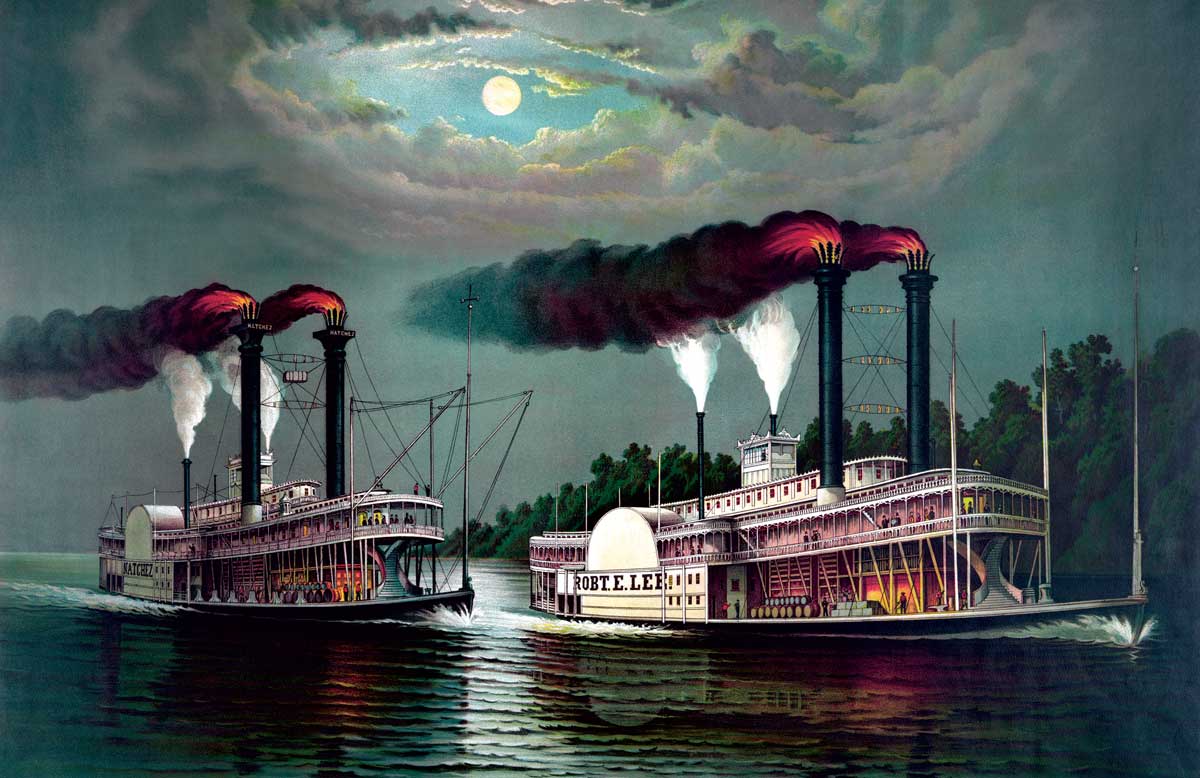
For over 2,000 miles, the Mississippi River snakes through the heart of America along the course it has followed more or less since the last Ice Age, drawing in most of the water between the Rocky and Appalachian Mountains. It is a contrary river, too, shifting its delta every millennium or so, adding miles of fertile land to the Louisiana coastline in the process. As long as there have been humans on the North American continent, this river has been at the centre of their lives. Long before Europeans arrived, agricultural civilisations flourished on its banks, leaving a series of monumental earth mounds that were first constructed at about the same time as the Egyptian pyramids. Today – though most would not know it – the river remains vital to the US. By some estimates it is critical to about $500 billion in revenue and 1.5 million jobs.
When it floods – which it still does regularly, despite the best efforts of the Army Corps of Engineers – it makes it presence, and its power, implacably felt. In spite of its relatively neglected status in modern American life, it continues to hold an enormous weight as a symbol of national identity.
Much of that significance rests on the writing of Mark Twain. Growing up in Hannibal, Missouri, a small town on what was then still the frontier, the Mississippi was the focus of his childhood, whether swimming with friends or watching the steamboats come and go in what would prove to be their golden age. Those steamboats were more than just a diverting spectacle: they ensured that Hannibal, though a small town, was a node in a much larger river network of trade and transportation that stretched along the Ohio and Missouri rivers down the Mississippi to New Orleans almost 1,000 miles south.
They also meant that Hannibal was implicated in America’s slave trade. Mark Twain grew up in a family that used the labour of enslaved people; he remembered seeing shackled humans waiting to be sold down the river. Still, he was eager to take to the river in earnest. After a youthful career as an itinerant printer he trained to become a steamboat pilot and took his position at the top of the Mississippi’s social and economic hierarchy. And there he might have stayed, had the Civil War not exploded his plans. Toying with fighting for the South, he soon thought better and left the Mississippi, and the war, behind. So, while America battled it out over slavery, Samuel Clemens headed west, found his pen name, set out for Europe, married money and became a household name for his humorous sketches and subversive travel accounts.
Washed away
Yet the river never left him. The Mississippi featured in a number of his early books, including The Adventures of Tom Sawyer (1876), and a series of articles about his experiences as a steamboat pilot. Eventually, he returned to the source. In 1882 he was planning to write a comprehensive travel account of the river, which would develop into Life on the Mississippi (1883), and he was stuck halfway through the book that would be remembered as his masterpiece, Adventures of Huckleberry Finn (first published in Britain in 1884 before the American edition in 1885). It was time to go home. But when he got to the river, after an absence of two decades, things had changed. The river had washed away many of the landmarks that he had relied on as a steamboat pilot. Many of his old colleagues were in their graves. They were not the only ones. Surveying the river that he had known as a busy thoroughfare in the years before the Civil War, Twain declared mournfully: ‘Mississippi steamboating may be called dead.’ The apparent emptiness of the river struck him forcefully. ‘The loneliness of this solemn, stupendous flood is impressive’, he described in Life on the Mississippi, ‘and depressing’. And so he turned to his memories to shape the watershed stories about the river. There are few more indelible images from American literature than Huck Finn and his enslaved companion Jim on their raft, floating down the Mississippi in their united quest for different kinds of freedom.
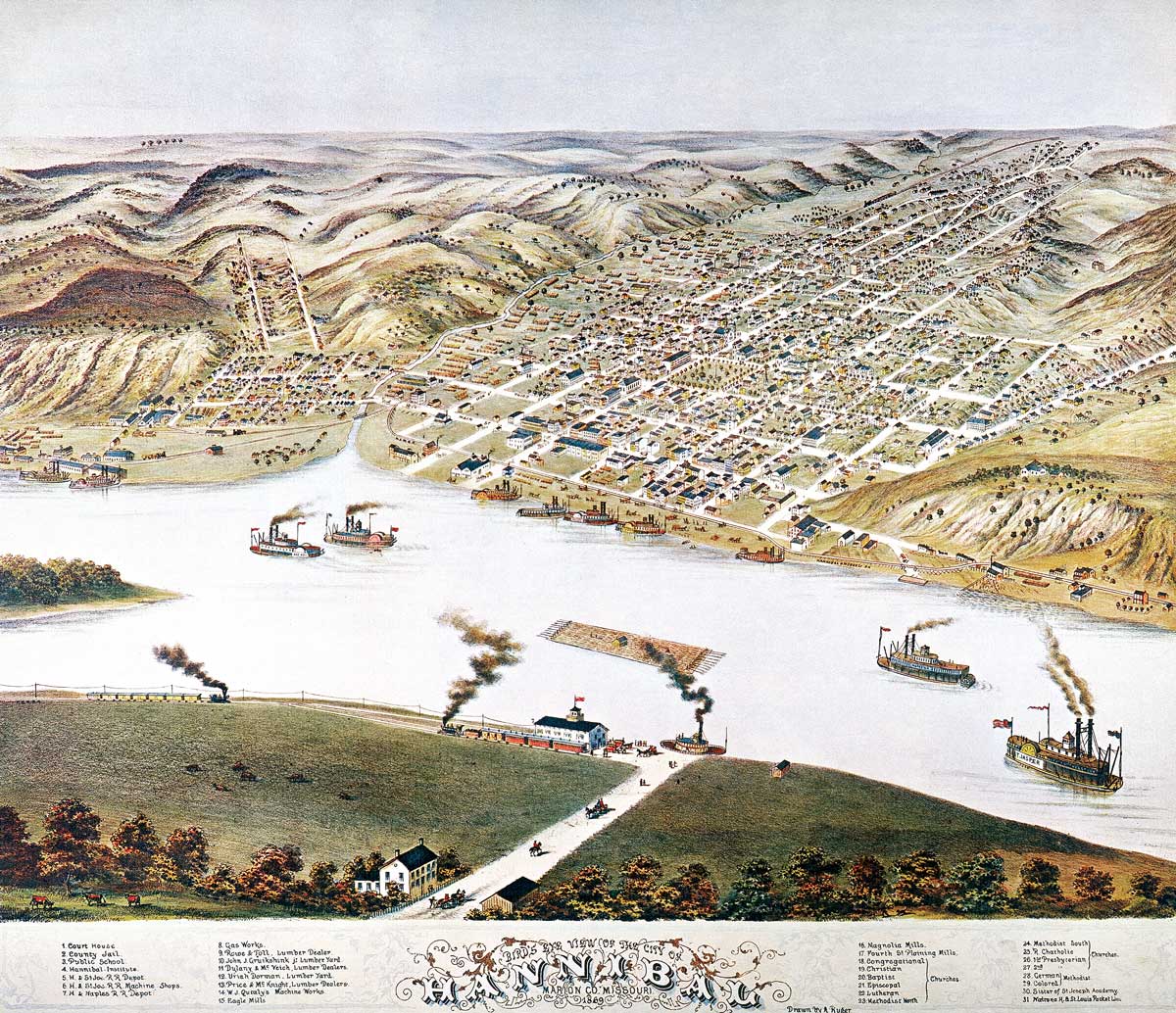
The writings of Mark Twain, then, have made the river into an imaginative space that belongs to the world. Yet another effect of those resonant images has been to obscure the real river. The Mississippi might have been moribund for Twain in 1882, but for others it was only just coming to life. Twain was not wrong, of course: the steamboating world that he had known in his youth was certainly fading. The river was still a vital economic highway in the heart of the nation, but railroads, with their speed and convenience, had taken away almost all of the passenger traffic. Between 1870 and 1910, there was a 70 per cent reduction of steamboat tonnage between the important river towns of St Louis and New Orleans; by 1909 the last direct service between them came to an end. A series of particularly destructive and disruptive floods did not help either. Piecemeal efforts to control the Mississippi availed little. It would take the truly devastating deluge of 1927 and the subsequent Flood Control Act of 1928 for significant attention to be paid to the problem. Yet still the river floods. Indeed, in 2019 the river has been in flood for longer than at any time since 1927.
When the British engineer and builder of the Aswan Dam Sir William Willcocks visited the river in 1914, he felt the real problem was one of ‘national psychology’. He scolded Americans for their exceptionalism: ‘You treat the Mississippi as if it were a river apart, differing utterly from all other streams. It is nothing of the sort. It is just like all other rivers.’ Americans would not agree. A contributor to the Atlantic magazine in 1908, while describing the river as ‘the greatest irritant in the United States’, also acknowledged that his compatriots, particularly those who knew the Mississippi intimately, still held enormous affection for a waterway that seemed like no other: ‘We love the river, damn it!’
Cultural amnesia
Throughout these years of neglect the river was quietly helping to create the new America that was taking shape in the wake of the Civil War in ways that are still discernible today. Stretching from North to South, the river was a symbolic faultline in the heart of the nation, yet it also served as a space of reconciliation. If people no longer thought about the river as a vital highway, it became reframed as an escape into a quintessential, lost America that seemed to be an authentic alternative to the travails of modern life. Almost immediately after the war, American journalists used a journey along the river to come into contact with the recent enemy and to take stock of life in the defeated South. As the spirit of reunion developed, though, the tone of those kind of sketches changed. We might think of Adventures of Huckleberry Finn as a book of its time because of its concerns with both the evils of slavery and the ongoing difficulties for those who were now free. It was a book that was, in many ways, entirely out of step with its moment. Then, as now, many Americans were all too ready to forget about the role of slavery in their history; indeed, they were increasingly keen to supplant it with romanticised tales about the nature of life in the old South. This was the kind of cultural trajectory that would reach a global apotheosis with the success of the novel Gone With the Wind in 1936 and whose legacies are still evident today in ongoing debates about Confederate memorialisation.
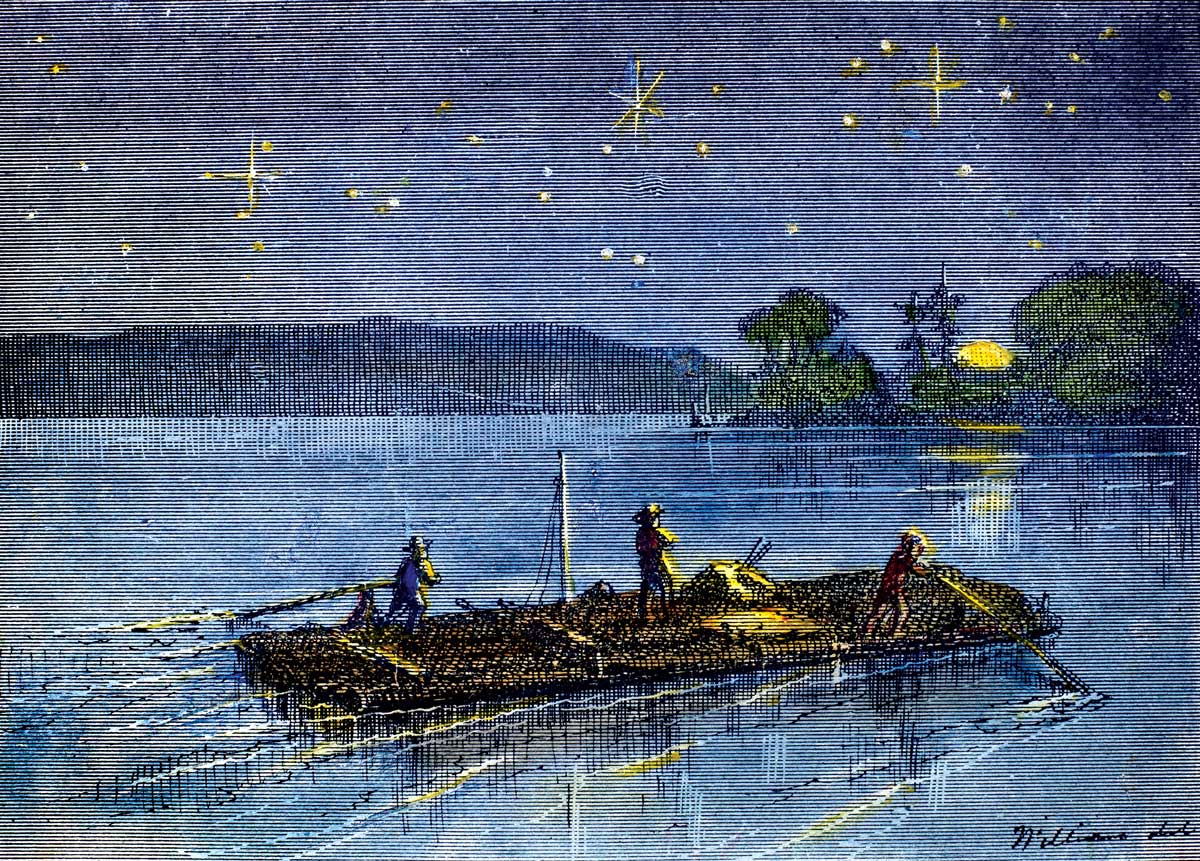
The Mississippi became implicated in this pernicious nostalgia. Writing for Harper’s New Monthly Magazine in 1893, for example, Julian Ralph took an anachronistic steamboat journey along the river while touring the South. Travelling ‘The Old Way to Dixie’, as he termed it, was a knowingly archaic thing to do, but that was a big part of the trip’s appeal. It allowed him to ‘float back into a past era, there to loaf away a week of utter rest, undisturbed by a telegraph or telephone, a hotel elevator or clanging cable-car’. He could imagine himself to be ‘back in the South when its planters basked in the glory of their feudal importance’. Untroubled by memories of the slavery that had underpinned that lifestyle, he found his steamboat sojourn to be ‘the laziest, most alluring and refreshing, journey that one tired man ever enjoyed’. Similar sketches, echoing such sentiments, would appear periodically in the popular press well into the 20th century.
Rewilding
Escape into this kind of romantic cultural amnesia was not the only role that the river played. Once the epitome of industrial American progress, the Mississippi now became its antithesis: a landscape that suddenly seemed wild again. As such, it became a destination for a new group of enthusiasts. Increasingly in the late 19th century, in the kind of trend that we can still see today, America turned to nature as a cure for the creeping ills of urbanisation and industrialisation. One of a number of outdoors pursuits that put largely white, middle-class Americans in communion with the natural world, a craze for canoeing swept the nation in the last decades of the 19th century. And for ardent canoeists, there was no bigger challenge than the Mississippi.
‘A cruise down the Mississippi River had been my early boyhood dream’, admitted Ben C. Wilkins, who successfully tackled the river in the Little Nan, but it was not until ‘the warning hand of nature knocked sternly at the door and demanded a change and a rest from a busy business life’ that he actually took to its waters. Wilkins was one of a number of members of the American Canoe Association who not only braved the river and lived to tell the tale, but also published long accounts of their experiences. To a man (and they were largely men, although women were also involved), they expressed the same kind of motivations for their expeditions. As Nathaniel H. Bishop put it, they went in search of a feeling ‘which no one knows until he throws aside the chains of everyday life, steps out of the worn ruts, and, with his kit beside him, his oar in his hand, feels himself master of his time, and FREE’.
Like Huck and Jim, it was freedom that canoeists sought. But, as it was for Huck and Jim, liberation often proved elusive. Though they thought they were fleeing the ills of modern America by taking to the Mississippi, it was striking how often it also brought them into close contact with its pressing problems. Along the river, they encountered pollution, poverty, crime, racial violence – the long legacies of slavery. They found barefoot children dressed in rags and were told about lynchings. One canoeist was attacked by a white mob who suspected he was a political spy attempting to direct the votes of newly enfranchised African Americans. Bishop asserted that the life on the river ‘makes all men equal’, as if the Mississippi were a space where the founding principle of America could be rediscovered. What these recreational canoeists really discovered was that the river took them deeper into an underworld where they had to confront the hard truths of contemporary American life, not escape them.
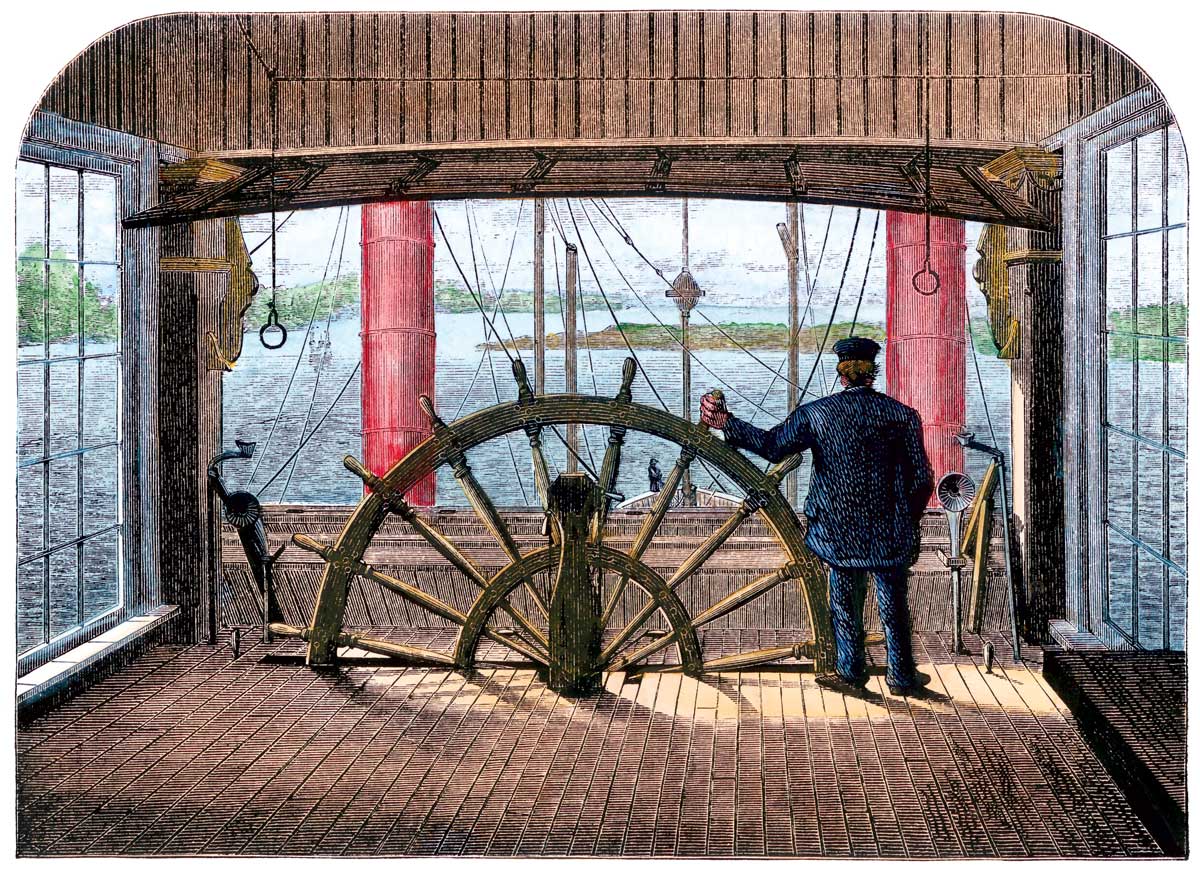
Still, the canoeists helped to chart a course for another group who took to the river with the goal of escape. A popular fashion for houseboats and shantyboats developed in the 1920s and 1930s. The writer Ben Lucien Burman, who had spent time on steamboats in the early 20th century, reckoned that as many as 30,000 of these makeshift craft were scattered along the river in those years. For some, living on the river in this fashion was a matter of necessity. The canoeists of the 1880s had encountered plenty of families living in precarious poverty on the Mississippi. But for a new generation of young bohemians looking for their own return to nature, the houseboat became a favoured craft. In 1911, John and Janet Lathrop Matthews described their desire to take to the Mississippi as an attempt to ‘throw aside our formal, conventional selves, and step for a brief season into the full fellowship of wanderers’ to live as ‘water gypsies in a floating van’. For fellow houseboaters Kent and Margaret Lighty the wider neglect of the Mississippi meant that it had ‘slipped out of the public consciousness into a fertile kind of obscurity’ to become ‘the last frontier of those who will not live by laws other than their own’.
This sense of the river as a quintessentially countercultural American space has survived. At any given moment, it is still possible to find news of some brave soul taking to the water to find both themselves and the real America somewhere along the Mississippi. As the travel writer William Least Heat Moon has noted, the ‘encompassing mystique’ of the river means that ‘taking a craft of whatever configuration down the Mississippi’ has become ‘an archetype’, one that is ‘so repeated it’s on the way to developing into a ritual for a nation shy on communal rituals’.
Roustabouts
If there was one group for whom the issue of freedom on the river was most sharply felt at the turn of the century, it was those communities that best understood what slavery had really meant. In the years before the Civil War, the Mississippi had been the proverbial river that roughly a million human beings were sold down. Enormous quantities of cotton, the main product of their enslaved labour, were also transported along it to New Orleans, before heading for the textile mills of Britain. During those years, black Americans, both enslaved and free, had a role to play in life on Mississippi steamboats. The writer, orator and anti-slavery campaigner William Wells Brown, for example, spent much of his youth enslaved on steamboats, working as a waiter when he was not being forced to prepare other enslaved people for the auction blocks of New Orleans. Yet while the river represented the worst of slavery in the Antebellum years, it also offered movement and the possibilities of escape. Brown, for example, used the river when he finally made his flight from bondage. With profound nerve, he used the bustle of a steamboat landing to slip away: ‘Taking up a trunk, I went up the wharf, and was soon out of the crowd. I made directly for the woods.’ He kept going, to freedom.
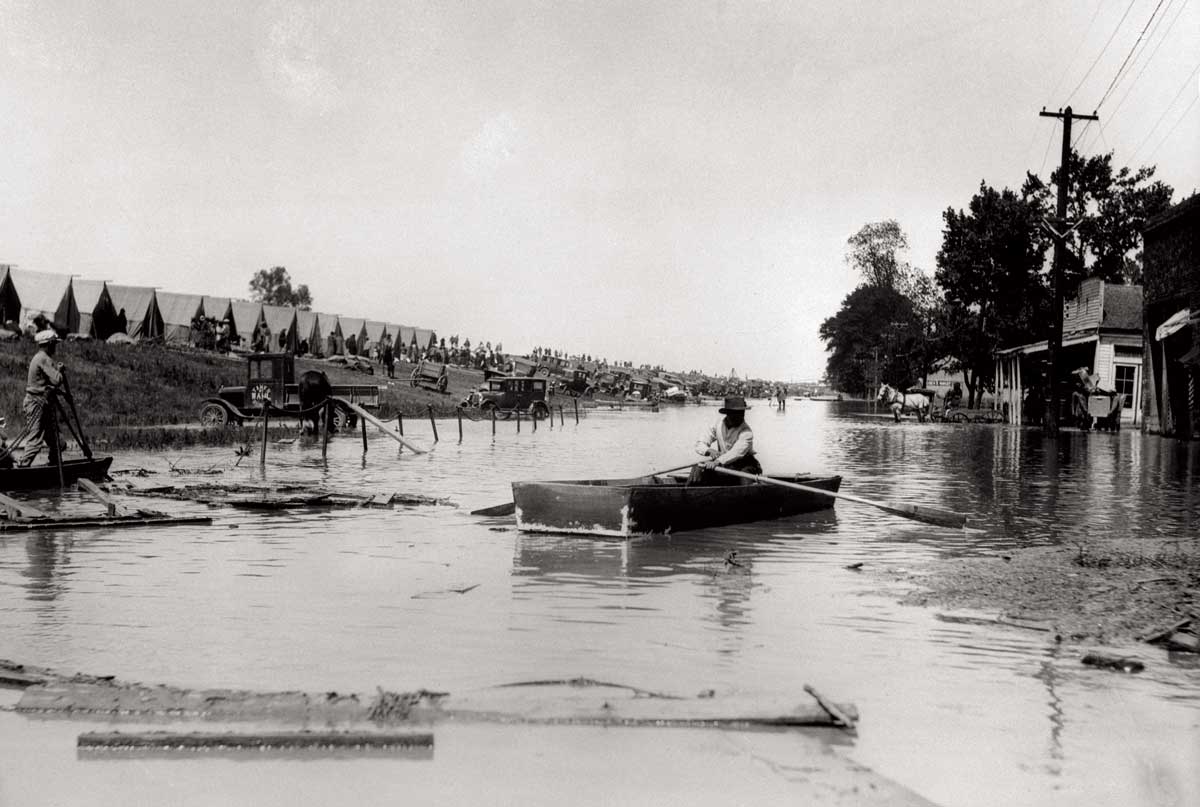
Even after the abolition of slavery, the possibilities of movement and self-definition still clung to the river for some. After the war years, African Americans came to dominate the roustabout trade, the job of loading and unloading steamboats as they made their landings along the river (enshrined most famously in popular culture in the character of Joe from Show Boat and his song ‘Ol’ Man River’). This was hard, dangerous, marginal work. Roustabouts were frequently the subject of exploitation and violence. In 1874 the New York Times described them as ‘a class that is poorly treated, and is made to suffer much’. Out of those hardships, though, the roustabouts developed a distinctive subculture that fascinated those who came into contact with it. Some commentators liked to invest the roustabout with the same kind of bohemian spirit that the houseboaters affected: ‘The roustabout is traveller, nomad, autocrat, man of leisure’, wrote one reporter in 1903.
What was without doubt, everyone agreed, was the centrality of music to their life. Any mention of roustabouts was incomplete without some snatches of what the journalist and world traveller Lafcadio Hearn described as their ‘curious songs’ performed in a ‘wild, melancholy key’. These songs were a document of the pleasures and perils of roustabout life, blending stories of street life and river life, celebrating steamboats and sweethearts, mixing comedy and tragedy; they reached back into history and the memory of slavery and the plantation, while revelling in the movement still afforded by the western waters. They were the sound of a modern America that was slowly taking shape.
One keen listener was taking notes. W.C. Handy, the so-called ‘Father of the Blues’, grew up in Clarksdale, Mississippi, where he encountered plenty of roustabouts who came to town. He later remembered in his autobiography how they ‘brought the legendary songs of the river’ with them. Destitute in St Louis in 1893, Handy was forced to sleep for a time ‘on the cobblestones of the levee of the Mississippi’, and received some comfort from the music he heard there. In Memphis in 1914, now a successful band leader and looking for a hit, Handy went for a walk along Beale Street and admired the attitude of the ‘powerfully built roustabouts from the river boats’, who ‘sauntered along the pavement’. He thought back to the music that he had known in his youth. Then he returned to his rented room to write ‘St Louis Blues’ and changed the course of American culture forever. Jazz, too, was incubated along the river. Steamboats even had a resurgence ferrying jazz tourists on cruises up and down the Mississippi. Though the occupation was long gone, those boats also always made sure to hire an entertainer or two to pretend to be a roustabout, to add to the sense of authenticity. For some, this new musical craze was nothing new: ‘I often hear people going wild over jazz’, declared Captain Blanche Leathers, one of the only women to receive a licence to command her own steamboat in 1894, ‘but I wish they could have heard the ... roustabouts singing as they unloaded cotton. It was jazz pure and simple.’
Ripple effect
Writing from Mark Twain’s childhood hometown of Hannibal in 1910, the year of his death, a correspondent from the Washington Post declared: ‘The man who has never made a trip down the Mississippi River in the real steamboat days has lost a page of life.’ For countless readers around the world, Mark Twain’s stories have filled that lack. His river books, like the Mississippi, wind their way through American life and thought, drawing deeply from both the horrors and the joys of the nation’s history. Yet those stories should lead us back to the Mississippi itself and, particularly, to the people who made their lives along it when Twain was shaping his masterpieces. The legacies of the Mississippi still ripple through modern life, every time someone heads out on the river with dreams of America and every time someone sings the blues.
Thomas Ruys Smith is the author of Deep Water: The Mississippi River in the Age of Mark Twain (LSU Press, 2019).